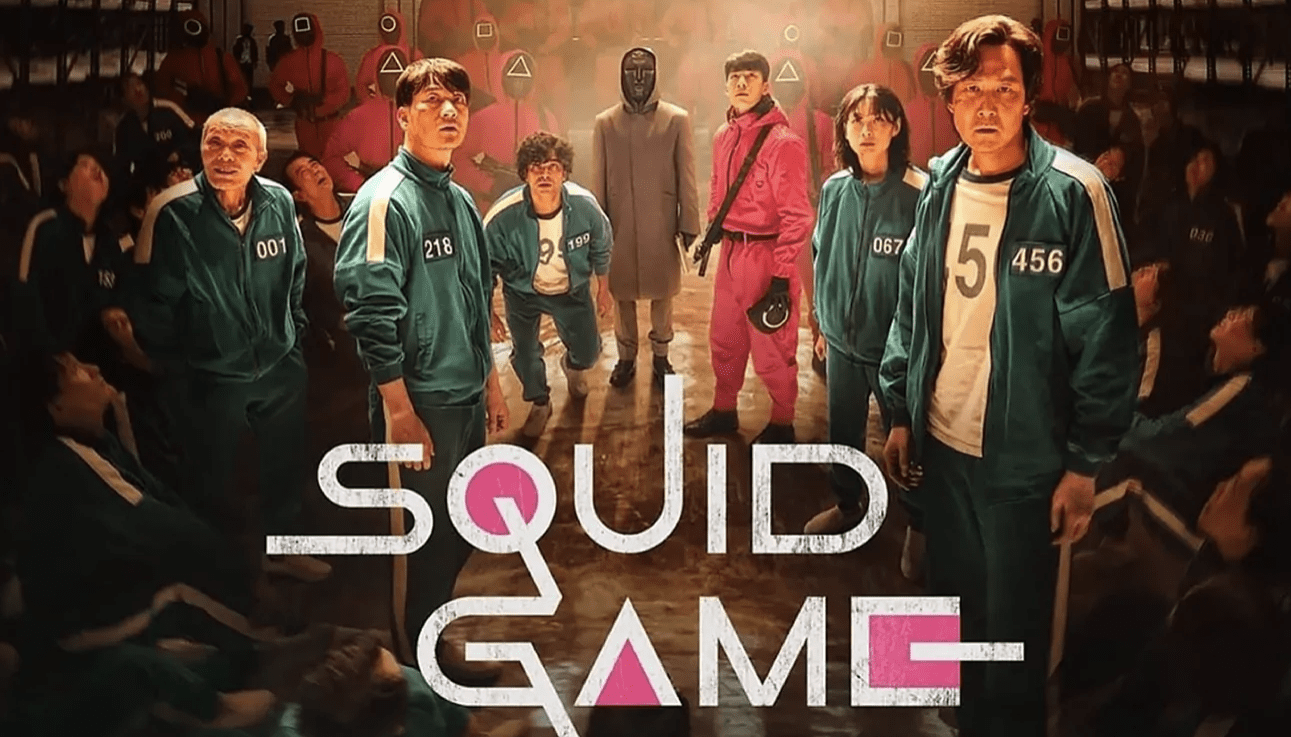White slip-on Vans have never been so cool. And red light green light? For fans of Netflix’s Korean-language series “Squid Game,” winning that simple childhood contest just took on a whole new meaning. Though it only launched on September 17, “Squid Game” has quickly become Netflix’s most-watched series—ever. Mining themes of economic disparity and the survival instinct, “Squid Game” sets up a disturbing premise: a group of hopelessly indebted people in South Korea are invited to join a tournament of six children’s games to win a pot of cash. The catch? Losers are eliminated—but as the contestants soon find out, that doesn’t mean they just get to take their ball and go home. They are killed off, with the surviving players competing for increasing shares of the loot. Spoiler alert: there will be blood.
And audiences don’t seem to mind. Netflix has shared that in the first four weeks after the show’s drop, 142 million households had already tuned in to the dark drama. As early as October 3, Forbes was reporting that “Squid Game” was the number-one Netflix show in a whopping 90 countries. That’s a lot of eyeballs, and the show’s global appeal naturally opened up a huge playing field for businesses to create interesting marketing strategies around the show. But because Netflix doesn’t offer brands an opportunity to run commercials, advertisers have had to figure out some creative ways to tap into this juggernaut. Let’s take a closer look.
Examples of Brands Capitalizing on “Squid Game”
Some brands haven’t had to do much but enjoy the ride. Vans, for example, hasn’t paid for any product placement. But in the show, game contestants are given teal tracksuits and white slip-on shoes to wear during the tournament, a costume that has turned out to be insanely lucrative for Vans. In the two weeks after “Squid Game’s” launch, the American shoe and apparel company reported a jaw-dropping 7,800 percent jump in sales, probably fueled at least in part by a 97 percent increase in online searches for “white slip-on.”
Other brands have had to be a bit more proactive. Nutter Butter took to Twitter, superimposing its cookie on a “Squid Game” guard’s head and insisting that “We want Nut Game.”
Squid Game this, Squid Game that. We want Nut Game @netflix pic.twitter.com/42uTcpiNpO
— nutter butter (@NutterButter) October 1, 2021
Also on Twitter, Heineken used its red star-shaped logo in a nod to one of the show’s tournament games, one in which players, not yet knowing the game rules, choose one shape from a selection of four.
The best pick #Heineken pic.twitter.com/S1lDbuYPi0
— Heineken (@Heineken) October 7, 2021
They must then extract that shape from where it has been stamped into a “dalgona,” or sugar candy (“The best pick,” Heineken crowed in reference to the star). And Pepsi latched onto the sweet and deadly game with an Instagram post featuring its logo carved into a sugary disk.
Embracing a star from the series has been another way to connect with the show. Louis Vuitton recently announced “Squid Game” actress Ho Yeon Jung as a company brand ambassador. The luxury brand is tapping into her burgeoning popularity on social media channels like Instagram. For context, when the show launched in September, Ho Yeon had 40,000 Instagram followers. Just three weeks later, that number had leapt to 19.1 million. Louis Vuitton clearly took note, and took action, a choice that’s paid off: Ho Yeon’s first post as ambassador earned more than seven million likes in the first few days.
Meanwhile, Netflix, no slouch in the promotions department, has made the savvy move of partnering with another corporate powerhouse — Walmart— to sell merchandise for a number of popular streaming shows including, natch, “Squid Game.” A dedicated digital storefront for Netflix, created by Walmart, is a natural go-to for consumers looking for merch associated with the show: everything from the white numbered tee-shirts worn by “Squid Game” contestants to knit beanies and mugs. This even as Netflix maintains its own line of apparel fans can customize with “designs inspired by the show.”
Lessons Learned
What might your brand take away from the whole “Squid Game” phenom? We suggest that in the face of any hot trend, you:
- Act quickly. These businesses jumped in right away to capitalize on the buzz appeal of “Squid Game,” timing their marketing with the media frenzy building around the show. Had they waited too long, their marketing would have seemed stale and tired. But by acting quickly, brands like Heineken came across as relevant and cool.
- Pay attention to your tone. “Squid Game,” despite its popularity, is a violent show that might not be for everyone. The brands discussed above figured out how to strike the right tone with their ads—in this case, content that didn’t skew too dark while still being recognizable as being inspired by the series.
- Trust your audience—and recognize that you don’t have to reach everyone. The visually appealing ads, such as the Pepsi cut-out, come with zero explanation. But if you are a fan of “Squid Game,” you automatically understand the ad’s inside reference to one of the major plotlines. Pepsi trusted “Squid Game” fans to get the joke, even as they accepted that the ads would probably go over the heads of people who hadn’t seen the show.
- Align with another brand if it makes sense. Netflix’s partnership with Walmart means that “Squid Game” merch reaches a wider audience. Both brands benefit if those beanies fly off the shelves. Likewise, Louis Vuitton’s connection with one of the show’s stars demonstrates relevance—and represents a mutually beneficial partnership.
Contact True Interactive
How to not only tap into trends but make it look easy? Contact us. We can help.
